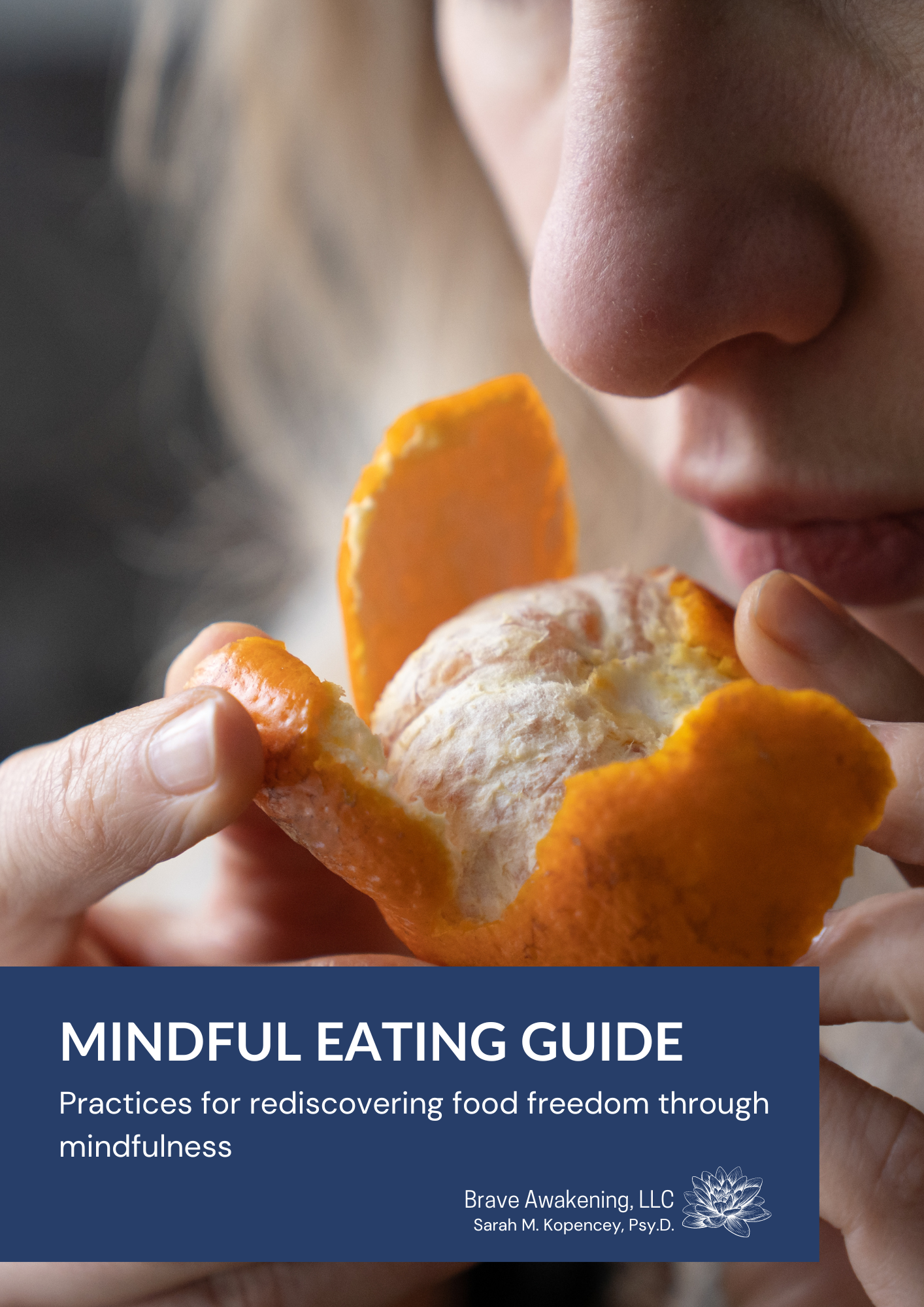Mindful Eating – Why it’s not about eating “healthy”
The research is in, diets don’t work! While the precise percentage is debated, the data tells us that by 1 year, most people who’ve started on any of the 12 best known diets (think Atkins, Keto, South Beach, etc.) regain the weight and lose cardiovascular health improvements [1]. Despite being a massive failure, diet culture persists and has loaded our language around food with labels like healthy and unhealthy. These words are nothing more than a construct we have applied to food and eating behavior that imposes a moral judgement. The truth is, whether we are eating a donut or a salad, we can do it mindfully.
“Mindful eating, when approached in a food inclusive way, holds the potential for all of us to reconnect to our bodies with compassion, and in turn, rediscover greater freedom and enjoyment with food.”
What is Mindful Eating?
Mindfulness is not about setting your sights on a particular expected outcome or goal, i.e., weight loss or behavior change. It’s the opposite.
Mindfulness asks us to suspend our expectations and enter the present moment with a willingness to experience things just as they are.
Mindfulness describes the way not the what or even the how it will be. The original intention of the contemplative traditions that gave rise to mindful eating was to allow all people in all bodies everywhere to feel welcome to discover freedom from suffering for themselves. The Buddha is quoted as having said, “Don’t take my word for it, go and see for yourself.” That means, take the simple instruction to observe the present moment without judgement, and watch what unfolds for you. He did not say, “do this only when eating vegetables.”
I’m reminded of an instruction I heard given from a teacher while on a silent retreat. Part of entering retreat practice is to take the Nobel precepts, one of which is to abstain from taking life, without exception. This includes insects. Our teacher offered us the compassionate reminder that if in our everyday life we swat and kill a mosquito that has landed on our arm, we might find this automatic action happens before we can catch ourselves, and if so, to compassionately observe how that has made us feel. By mindfully observing our experience, we can bring ourselves into greater intimacy with the compassion that might arise for the squashed mosquito and the remorse of our action to kill it. But this is not assumed. We’re just given the space to notice.
This teaching is a reminder that it is okay, and realistically all we can do, to start wherever we are. That may mean that for some, they will start practicing mindful eating with an almond, and for others, with a chip. In fact, whatever food you normally eat mindlessly is exactly the food that warrants your investigation. Go back to a beginner’s mind. Observe a single chip with curiosity bordering on fascination. How do they even get the corn pressed into that triangular shape and so evenly coated with powdered cheese and spice?
Mindful eating, when approached in a food inclusive way, holds the potential for all of us to reconnect to our bodies with compassion, and in turn, rediscover greater freedom and enjoyment with food. But, don’t take my word for it, go and see for yourself.
[1] Ge L, Sadeghirad B, Ball GDC, da Costa BR, Hitchcock CL, Svendrovski A, Kiflen R, Quadri K, Kwon HY, Karamouzian M, Adams-Webber T, Ahmed W, Damanhoury S, Zeraatkar D, Nikolakopoulou A, Tsuyuki RT, Tian J, Yang K, Guyatt GH, Johnston BC. Comparison of dietary macronutrient patterns of 14 popular named dietary programmes for weight and cardiovascular risk factor reduction in adults: systematic review and network meta-analysis of randomised trials. BMJ. 2020 Apr 1;369:m696. doi: 10.1136/bmj.m696. Erratum in: BMJ. 2020 Aug 5;370:m3095. PMID: 32238384; PMCID: PMC7190064.



